Umweltfreundlicher Siebdruck ist eine kreative Möglichkeit, einzigartige Designs zu machen und gleichzeitig freundlich auf dem Planeten zu sein. Durch die Verwendung nachhaltiger Materialien und die Reduzierung von Abfall, Sie können die Kunst des Druckens genießen, ohne die Umwelt zu schädigen.
Dieser Leitfaden hilft Ihnen dabei, alles über umweltfreundliche Druck zu verstehen, Aus welchen Werkzeugen und Materialien benötigen Sie Tipps, um den Prozess reibungslos und effizient zu gestalten. Egal, ob Sie gerade erst anfangen oder versuchen, Ihren Druckprozess nachhaltiger zu gestalten, Hier finden Sie alle Schritte, um schöne Drucke auf grüne Weise zu erstellen.
Lassen Sie uns einspringen und verantwortungsbewusst drucken!
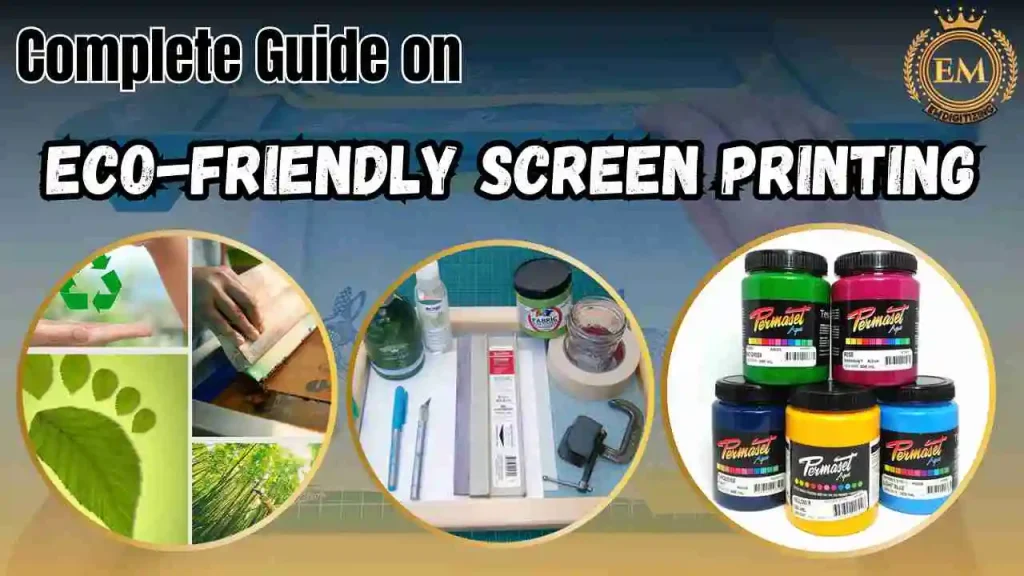
Vollständiger Leitfaden zum umweltfreundlichen Siebdruck
Schlüsselvorräte für umweltfreundliche Siebdruckdrucke
Auswahl der richtigen Vorräte für Umweltfreundlicher Siebdruckdruck ist die Grundlage für die Schaffung umweltverantwortlicher Designs. Hier finden Sie eine Liste wesentlicher Materialien, die mit nachhaltigen Praktiken übereinstimmen:
- Pflanzliche Tinten
- Kompostierbare Rakeln
- Wiederverwendbare Netzbildschirme
- Nachhaltige Stoffoptionen
- Langlebige und waschbare Schablonen
- Chemikalienfreie Reinigungsmittel
1. Pflanzliche Tinten
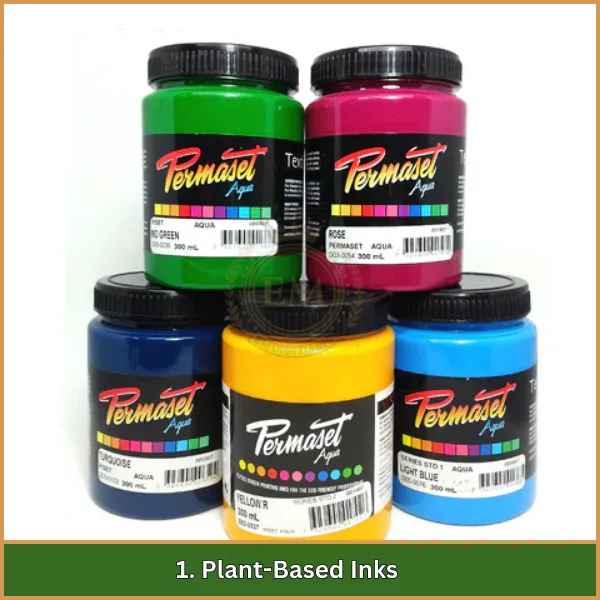
Verabschieden Sie sich von schädlichen chemischen Tinten und Hallo zu pflanzlichen Alternativen! Diese Tinten werden aus natürlichen Ölen und Pigmenten hergestellt, Sicherstellung von lebendigen Drucken ohne Kompromisse beim Planeten.
Profi-Tipp: Entscheiden Sie sich für eine Reihe von umweltfreundlichen Farben, die hervorstechen.
2. Kompostierbare Rakeln
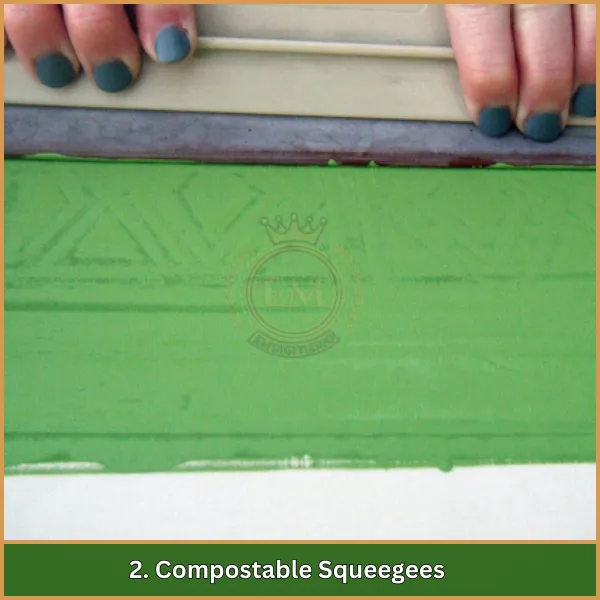
Traditionelle Plastik -Rakel sind ausgegeben - kompostierbare Rakel sind in! Aus Materialien wie Bambus hergestellt, Diese Rakel sind während des Gebrauchs robust und sanft in der Umgebung, wenn es Zeit ist, sie zu entsorgen.
Warum Bambus? Es ist erneuerbar, dauerhaft, und kompostierbar.
3. Wiederverwendbare Netzbildschirme
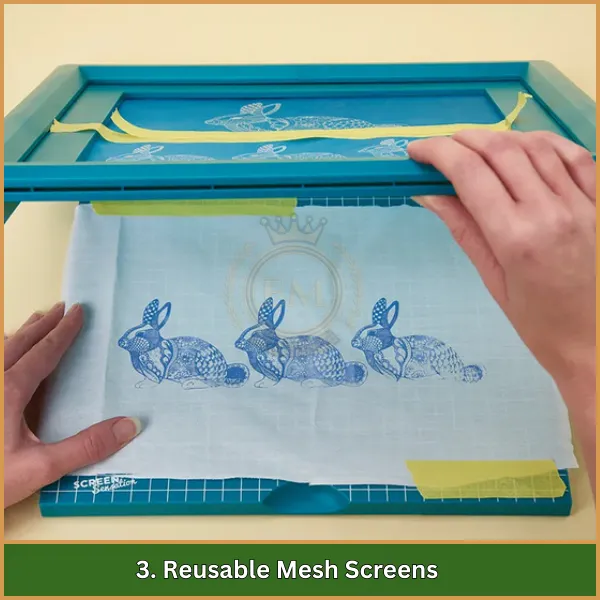
Ein umweltfreundlicherer Ansatz für den Siebdruck beinhaltet wiederverwendbare Netzbildschirme. Diese Bildschirme sind leicht zu reinigen und zu rekatieren, Abfall reduzieren und auf lange Sicht Geld sparen.
Top -Wahl: Aluminium -Bildschirme gepaart mit Polyesternetz bieten die perfekte Balance zwischen Haltbarkeit und Wiederverwendbarkeit.
4. Nachhaltige Stoffoptionen
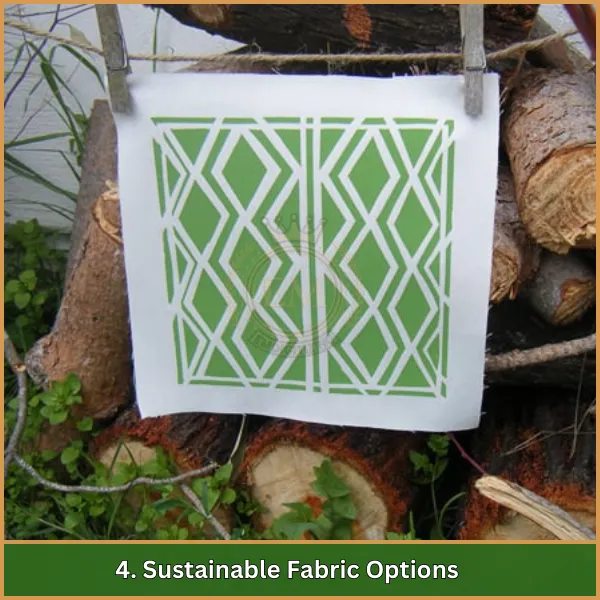
Der Stoff, den Sie wählen, ist genauso wichtig wie die Tinte. Nachhaltige Optionen wie Bio -Baumwolle oder recycelte Fasern unterstützen umweltverträgliche Praktiken und bieten ein besseres Gefühl für das Endprodukt.
Pro Empfehlung: Suchen Sie nach Stoffen mit der Aufschrift GOTS-zertifiziert für garantierte Umweltfreundlichkeit.
5. Langlebige und waschbare Schablonen

Waschbare Schablonen helfen Ihnen dabei, Abfälle zu reduzieren und gleichzeitig die Konsistenz in Ihren Designs aufrechtzuerhalten. Sie sind leicht zu reinigen und wiederzuverwenden, sie zu einem Muss für nachhaltigen Druck machen.
Bestes Material: Metallschablonen dauern länger und können häufigen Gebrauch standhalten.
6. Chemikalienfreie Reinigungsmittel

Das Reinigen nach dem Drucken muss die Umwelt nicht schädigen. Chemikalienfreie Reiniger aus natürlichen Zutaten sorgen für einen Safe, Effektive Aufräumung ohne Verschmutzung der Wasserversorgung.
Umweltfreundliche Auswahl: Reiniger auf Zitrusbasis wie Franmar liefern hervorragende Ergebnisse ohne Toxizität ohne Toxizität.
Schritt-für-Schritt-Prozess für umweltfreundliche Siebdruckdrucke
Es ist eine kreative und nachhaltige Möglichkeit, atemberaubende Designs zu produzieren und gleichzeitig Umweltschaden zu minimieren. Durch die Ausführung dieser detaillierten Schritte, Sie können professionelle Ergebnisse erzielen, ohne Ihr Engagement für Nachhaltigkeit zu beeinträchtigen.
1. Erstellen Sie Ihr Kunstwerk
Die Grundlage für alle Siebdruckprojekt ist das Design. Verwenden Sie Grafikdesign -Software wie Adobe Illustrator, Coreldraw, oder Canva, um Ihr Kunstwerk zu erstellen. Konzentrieren Sie sich auf sauber, Fetthaltige Designs mit minimalen feinen Details, um den Druckvorgang zu erleichtern und den Tintenverbrauch zu verringern. Sobald Ihr Entwurf fertig ist, Drucken Sie es auf einen transparenten Film aus, mit der später die Schablone erstellt wird.
2. Bereiten Sie Ihren Bildschirm vor
Wählen Sie einen wiederverwendbaren Netzbildschirm aus Polyester oder Edelstahl und befestigen Sie ihn an einem recycelbaren Aluminiumrahmen. Wenden Sie eine umweltfreundliche Emulsion gleichmäßig über den Bildschirm mit einem Scoop-Coater auf. Diese Emulsion hilft dabei. Legen Sie den beschichteten Bildschirm in einen Dunkeln, staubfreie Umgebung vollständig trocknen. Das Trocknen kann je nach Emulsionstyp und Temperatur einige Stunden dauern.
3. Übertragen Sie das Design
Positionieren Sie den transparenten Film mit Ihrem Design auf dem von getrockneten Emulsions beschichteten Bildschirm. Sichern Sie es fest, Sicherstellen, dass es sich während der Exposition nicht verschiebt. Verwenden Sie eine UV -Lichtquelle, um den Bildschirm für die empfohlene Zeit basierend auf Ihrer Emulsion freizulegen. Das Licht verhärtet die Emulsion in Bereichen, die nicht vom Design bedeckt sind, während die überdachten Bereiche weich bleiben. Einmal entlarvt, Spülen Sie den Bildschirm vorsichtig mit Wasser aus, um die weiche Emulsion zu entfernen, Enthüllen Sie Ihre Schablone.
4. Zum Drucken ausrichten
Richten Sie Ihren Druckbereich ein, indem Sie den vorbereiteten Bildschirm über den Stoff oder das Material platzieren, auf dem Sie gedruckt werden sollen. Stellen Sie sicher. Genaue Positionierung ist entscheidend, insbesondere beim Drucken mehrerer Elemente oder mit mehrschichtigen Designs.
5. Mit nachhaltiger Tinte drucken
Verwenden nachhaltiger Siebdruck Tinte, wie Tinten auf Wasserbasis oder pflanzlicher Basis, umweltfreundlich zu bleiben. Diese Tinten sind frei von schädlichen Chemikalien wie PVC und Phthalaten, Sie für die Umgebung und die Benutzer sicherer machen. Tragen Sie die Tinte oben auf dem Bildschirm auf, Verwenden Sie dann eine kompostierbare Rakel, um die Tinte gleichmäßig über die Schablone zu ziehen. Stellen Sie einen konstanten Druck sicher, um eine gleichmäßige Übertragung des Designs auf das Material zu erreichen.
6. Trocken und heilen
Nach dem Drucken, Lassen Sie Ihre Entwürfe auf natürliche Weise die Luft trocknen, oder verwenden. Die ordnungsgemäße Aushärtung sorgt dafür, dass die Tintenbindungen mit dem Material Bindungen, Das Design dauerhafter und widerstandsfähiger gegen Verschleiß und Waschen. Wenn Sie Wärme verwenden, Halten Sie die Temperatur niedrig, um den Energieverbrauch zu reduzieren und den Stoff zu schützen.
7. Verantwortungsbewusst reinigen
Das Reinigen nach dem Drucken ist ein wesentlicher Bestandteil des Prozesses. Verwenden Sie biologisch abbaubar, ungiftige Reinigungslösungen zum Waschen des Bildschirms, Rakel, und andere Werkzeuge. Vermeiden Sie es, Tinte auf dem Bildschirm trocknen zu lassen, Da dies die Reinigung erschweren und die Lebensdauer des Bildschirms verkürzen kann. Die ordnungsgemäße Reinigung stellt nicht nur sicher, dass Ihre Werkzeuge länger dauern, sondern auch Ihren Druckprozess nachhaltig halten.
8. Speicher für zukünftige Nutzung
Sobald alles sauber und trocken ist, Speichern Sie Ihre Bildschirme, Rakel, und andere Werkzeuge in einem coolen, trockener Platz. Die Wiederverwendung Ihrer Materialien reduziert Abfall und spart Geld, Machen Sie im Laufe der Zeit Ihren Siebdruckprozess effizienter und umweltfreundlicher.
Tipps zur Minimierung von Abfällen beim Siebdruckdruck
Wenn es darum geht Umweltfreundlicher Siebdruck, Das Minimieren von Abfällen ist eine einfache, aber wirkungsvolle Möglichkeit, Ihren ökologischen Fußabdruck zu verringern. Hier erfahren Sie, wie Sie es tun können:
- Halten Sie sich an wiederverwendbare Werkzeuge wie Netzbildschirme, Rahmen, und Schablonen, die wieder gereinigt und verwendet werden können.
- Speichern Sie nach jeder Sitzung jede übrig gebliebene Tinte, Da es für zukünftige Projekte wiederverwendet oder gemischt werden kann, um neue Farben zu erstellen.
- Mischen Sie und verwenden Sie nur die genaue Menge an Tinte, die benötigt wird, um überschüssiges Material zu verschwenden.
- Wechseln Sie zu biologisch abbaubaren Reinigungsprodukten, um Ihre Werkzeuge zu waschen, ohne den Planeten zu schädigen.
- Auf nachhaltige Stoffe drucken, wie organische Baumwolle oder recycelte Materialien, um grünere Praktiken zu fördern.
- Verwandeln Sie Fehler oder Schrottstoff in Testdrucke oder Proben, anstatt sie herauszuwerfen.
- Ordnen Sie Designs sorgfältig auf Ihr Material an, um jeden Zentimeter optimal zu nutzen und Abfall zu reduzieren.
- Teilen Sie Kenntnisse über die Verringerung der Abfälle mit anderen, um nachhaltige Druckgewohnheiten zu fördern.
Durch Einbeziehung dieser Praktiken, Sie können Ihre machen Siebdruckverfahren Reiniger, grüner, und effizienter.
Endeffekt
Mit umweltfreundlichem Siebdruck können Sie atemberaubende Designs erstellen und gleichzeitig auf dem Planeten freundlich bleiben. Mit nachhaltigen Materialien und nachdenklichen Methoden, Sie können einen großen Einfluss haben, ohne die Qualität zu beeinträchtigen.
Benötigen Sie professionelle Vektorkunst, um Ihre Drucke auf die nächste Stufe zu bringen? EMDigitalisierung ist für Sie gesorgt! Wir bieten qualitativ hochwertige Vektor-Kunstdienste zu unschlagbaren Preisen an, Mit blitzschnellen Turnaround- und garantierten Ergebnissen. Sie können sogar Ihr Design vorschauen, bevor es abgeschlossen ist. Plus, als Erstkunde, Sie werden ein exklusives genießen 50% Rabatt auf Ihre Bestellung!
Warten Sie nicht –Wenden Sie sich heute an uns Und lassen Sie uns Ihre kreative Vision zum Leben erwecken!
Häufig gestellte Fragen
Es ist eine nachhaltige Druckmethode, die ungiftige Tinten verwendet, wiederverwendbare Werkzeuge, und recycelte Materialien, um die Umweltschäden zu minimieren.
Im Gegensatz zum herkömmlichen Siebdruckdruck, Umweltfreundliche Methoden vermeiden giftige Chemikalien, Abfall reduzieren, und nutzen Sie weniger Energie, den Prozess sowohl für Menschen als auch für den Planeten sicherer machen.
Es schützt die Umwelt, sorgt für sicherere Arbeitsbedingungen, und appellieren an umweltbewusste Kunden, boosting your brand’;s Bild.
Ja, Umweltfreundliche Drucke Arbeiten auf vielen Materialien wie Bio-Baumwolle, Hanf, und recycelte Stoffe, Flexibilität für verschiedene Projekte bereitstellen.
